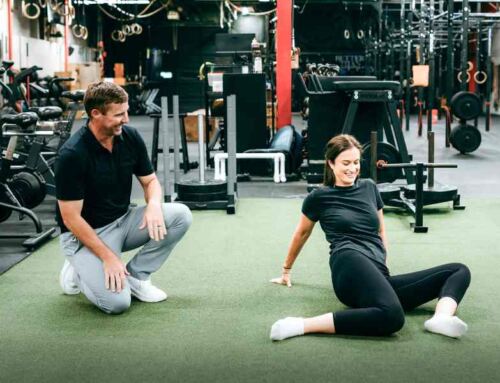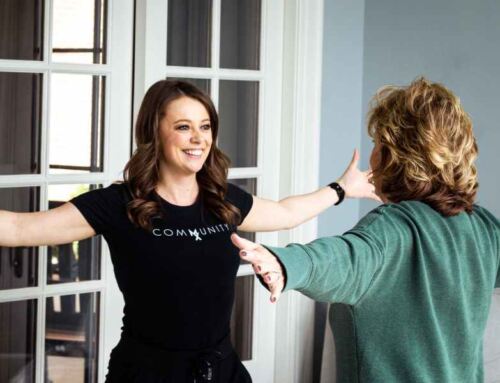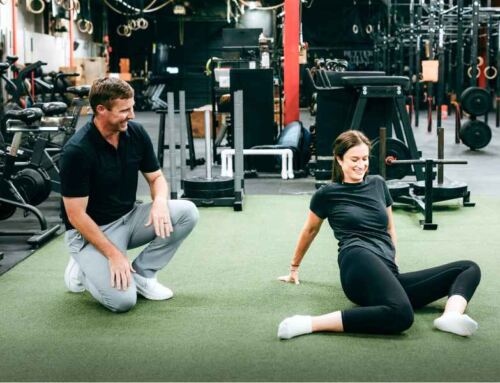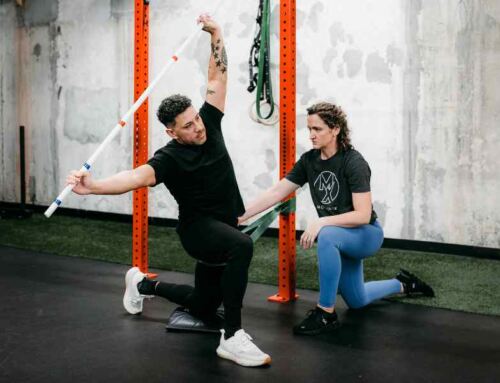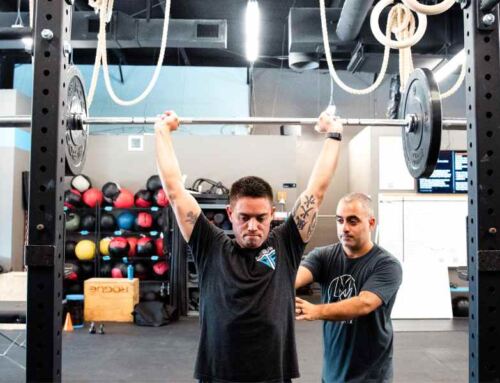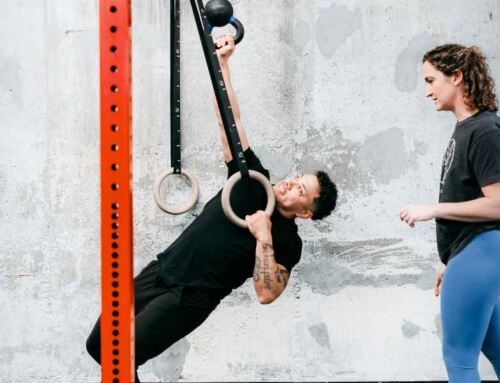If you’re an avid golfer, you know the importance of technique, consistency, and strength. But there’s one crucial piece of the puzzle that often gets overlooked, hip mobility. Whether you’re a weekend warrior or a competitive player, limited mobility in the hips can lead to nagging low back pain, hip discomfort, and a loss of swing power.
In this post, I’m breaking down why hip mobility is key for a healthy, efficient golf swing, how to spot mobility issues, and what you can do to keep your hips moving, and swinging, freely.
The Link Between Hip Mobility and Low Back Pain in Golfers
Studies show a high correlation between hip mobility deficits and low back pain in both professional and amateur golfers.²
Low back pain in a golfer and result in:
- Decreased power in during swing
- Slouching in initial stance leading to a less efficient swing or steeper swing plane
- Increased lateral sheer during swing
On top of that, the modern golf swing, which has become the standard today, demands greater mobility in both the upper back and the hips, particularly in hip internal rotation.
Unlike the classic swing, which allowed more lumbosacral rotation (pelvic rotation), the modern swing limits that movement, meaning the hips and upper back have to do more work.
When the hips can’t meet those demands, the body starts compensating elsewhere, usually the low back, leading to strain, muscle imbalances, and overuse injuries.
Why Is Hip Mobility So Important in the Golf Swing?
Think of your golf swing like a chain reaction. Each link, from the ground up, needs to connect and work efficiently to generate power.
It starts with the feet, moves into the hips, then the torso, arms, and finally the club. But if there’s a “weak link,” like limited hip mobility, power is lost, and the rest of the body is forced to pick up the slack.
That often means the lower back takes on extra stress it wasn’t built to handle. Over time, that stress adds up. In fact, 15% to 34% of golfers experience low back pain, and many of them also show signs of limited hip internal rotation.¹ Which is why catching hip mobility limitations early is important, it can aid in the prevention of pain, loss of swing power, and premature retirement from the sport of golf. While these findings are just a correlation and doesn’t equal causation, the connection is strong enough to deserve serious attention.
Signs You Might Have Hip Mobility Issues
Wondering if your hips are holding back your golf game? Here are some common symptoms:
- Pain in the groin, low back, or front of the hip (around where your front pocket is)
- Difficulty crossing your legs, tying your shoes, or putting on socks
- A swing that looks more like swaying or sliding instead of smooth hip rotation
- Feeling “stuck” or stiff during your backswing or follow-through
If any of these signs sound familiar, you might want to introduce some mobility and flexibility exercises into your routine. Below are some examples of mobility exercises that can be performed.
If, after a few weeks, you do not find significant improvement or you find it difficult to perform any of the exercises,you might want to see a physical therapist who specializes in orthopedic and sports rehab. They’ll help assess your mobility and set up a plan to get you swinging strong again.
Top Exercises to Improve Hip Mobility
Improving hip mobility isn’t about doing 100 different exercises, it’s about doing the right ones, consistently and with good form.
Here are a few that I recommend to get you started:
Seated Hip Internal & External Rotation (Mobility)

Sit or lie on the floor with your legs extended and slightly wider than hip-width. Keeping your knees straight, rotate your hips so your feet point inward (internal rotation), then outward (external rotation).
Duration: 2–4 minutes
Seated Hip Internal Rotation (Mobility)

Sit with your knees bent and feet flat on the floor, hands behind you for support. Drop both knees side to side in a controlled motion, stretching into hip internal rotation.
Reps: 20 reps slowly and with control
Hip 90/90 Stretch (Mobility)

Sit with one leg in front of you at a 90° angle and the other out to the side at 90°.
- Lean forward to stretch the front hip
- Lean back to target the back hip
- Switch sides and repeat
Reps: 10–20 slow, controlled reps
Kneeling Hip Flexor Stretch (Stretching)

From a half-kneeling position, engage your core and gently shift your weight forward until you feel a stretch in the front of the hip on your kneeling side.
Hold: 30 seconds
Sets: 3 per side
When to Do These Exercises
It can help to do these exercises both pre- and post-play to different effects.
- Before play: Focus on mobility drills to get your joints moving freely
- After play: Stretch to reduce tightness and improve recovery
Unsure On Your Approach? We Can Help
Remove the “weak link” that is hip immobility and low back pain from the chain reaction of your golf swing. When done consistently, the exercises above can lead to better hip rotation, less low back pain in all activities, not just your golf swing, improved swing mechanics, and a longer healthier golf career.
However, if you continue to struggle with low back pain, hip discomfort and stiffness or you find yourself needing assistance with the understanding of how to perform the exercises or how to move forward,our team at MovementX is here to help.
We offer in-home, in-office, or on-site sessions with licensed physical therapists who specialize in orthopedic and sports injuries. Let us evaluate your movement, treat any limitations, and create a customized plan to get you back to doing what you love, pain-free.
Ready to move better and swing stronger?
Request an appointment with a MovementX specialist today. We’re here for you—when you need it, where you need it.
References
- Minghelli B, Vilaça J, Nunes C, et al. Epidemiology of musculoskeletal injuries in golf athletes: a championship in Portugal. Int J Environ Res Public Health. 2024;21(5):542. doi:10.3390/ijerph21050542
- Reinhardt G. The role of decreased hip internal rotation as a cause of low back pain in a golfer: a case report. HSS J. 2013;9(3):278-283. doi:10.1007/s11420-013-9348-5
About the Author
Dionnea McMorris is a doctor of physical therapy in the DMV and Northern Virginia area. Among Dionnea’s treatment specialities are orthopedic injuries, sports physical therapy for athletes including runners and swimmers, pelvic health, geriatrics, and dry needling. Dr. Dionnea believes in research based treatment to help give you your best chance to stay in the sports and activities you love.



